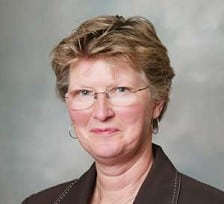Corn growers’ equity fund aims to build wealth
.floatimg-left-hort { float:left; } .floatimg-left-caption-hort { float:left; margin-bottom:10px; width:300px; margin-right:10px; clear:left;} .floatimg-left-vert { float:left; margin-top:10px; margin-right:15px; width:200px;} .floatimg-left-caption-vert { float:left; margin-right:10px; margin-bottom:10px; font-size: 12px; width:200px;} .floatimg-right-hort { float:right; margin-top:10px; margin-left:10px; margin-bottom:10px; width: 300px;} .floatimg-right-caption-hort { float:left; margin-right:10px; margin-bottom:10px; width: 300px; font-size: 12px; } .floatimg-right-vert { float:right; margin-top:10px; margin-left:10px; margin-bottom:10px; width: 200px;} .floatimg-right-caption-vert { float:left; margin-right:10px; margin-bottom:10px; width: 200px; font-size: 12px; } .floatimgright-sidebar { float:right; margin-top:10px; margin-left:10px; margin-bottom:10px; width: 200px; border-top-style: double; border-top-color: black; border-bottom-style: double; border-bottom-color: black;} .floatimgright-sidebar p { line-height: 115%; text-indent: 10px; } .floatimgright-sidebar h4 { font-variant:small-caps; } .pullquote { float:right; margin-top:10px; margin-left:10px; margin-bottom:10px; width: 150px; background: url(http://www.dmbusinessdaily.com/DAILY/editorial/extras/closequote.gif) no-repeat bottom right !important ; line-height: 150%; font-size: 125%; border-top: 1px solid; border-bottom: 1px solid;} .floatvidleft { float:left; margin-bottom:10px; width:325px; margin-right:10px; clear:left;} .floatvidright { float:right; margin-bottom:10px; width:325px; margin-right:10px; clear:left;}
A cell phone call breaks the loneliness of a dark night in a 70-acre field for Pam Johnson and gives her a chance to talk about something other than generating raw materials, namely the corn and soybeans on her family’s 2,700-acre farm in Floyd County.
It’s late November, and the Johnson family – Pam; her husband, Maurice; and two sons – is more than two weeks behind on the corn harvest. Wet weather has been a problem, and on this night, snow is in the forecast.
Though most predictions are for a near-record harvest in Iowa, farmers’ profit margins will be tight because of weak prices for corn and soybeans, high costs for inputs such as fertilizer and an anticipated surcharge for the delivery of propane to dry damp corn.
“Our margins will be thin,” Johnson said. She is sitting in the cab of a John Deere tractor, pulling a grain cart and listening to chatter on a two-way radio as she carries on the conversation over the cell phone. “Do you mind if I work while I talk?” she asks.
Her crew is working around the clock, and her voice sounds tired.
It is enough to make a person consider the alternatives, and Pam Johnson has a keen eye for alternatives.
One of those is Iowa Corn Opportunities, a private equity fund established in 2008 by the Iowa Corn Growers Association to provide investment opportunities off the farm for its 6,000 members and provide seed capital and operating funds to agriculture-related businesses. Johnson is the president of the Iowa Corn Opportunities board.
The fund has $5 million in investment capital drawn from the association and its membership dues. By virtue of that membership, the organization’s 6,000 members hold an interest in the fund and stand to profit from its investments.
About 50 percent of the fund is invested in microwave drying technology that will be used at ethanol plants as well as in a company that processes food-grade corn oil and high-protein animal feed.
Brian Jones is the chief operating officer of Iowa Corn Opportunities. He said the fund continues to look for new investments in an effort to generate income for its members.
Those investments are intended to promote the development of agriculture-related companies, particularly those with a focus on corn and its byproducts. The amount of the fund could grow over time, he said.
“Farmers are intrigued by value-added investments,” Jones said.
For now, the companies it has invested in need to prove that they can survive in the marketplace. In other words, the investments have not been at work long enough to generate a return. Iowa Corn Opportunities also picks up a seat on the boards of directors of the companies it invests in.
There is a need, Jones said, for farmers to create wealth by investing in more than new equipment and next year’s crop.
“For too many farmers, when they talk about their retirement, they say, ‘See this 640 acres? That’s my retirement,'” Jones said.
Both Johnson and her husband are fifth-generation farmers. They have farmed together for 37 years, and “we’re still married,” she said.
Her interest in the Iowa Corn Opportunities fund derives from its ability to invest in businesses that provide additional value for the raw commodity she grows, and to create additional wealth for other corn growers and rural communities.
In the 1990s, when a local grain elevator operator filed for bankruptcy, Johnson worried about the impact the business’s collapse would have on her local community.
She became involved in the Floyd County Visioning Project, an organization of farmers, business leaders and citizens who tried to set goals for their community over the next 10 years. The concept of value-added agriculture was driven home during a trip to Renville, Minn., where several cooperatives had started a sugar beet processing business, a fish farm and other businesses.
The Johnsons also made a small investment in a Minnesota ethanol plant and other ag-related businesses.
Johnson has been elected to the National Corn Growers Association board. She chairs the organization’s research and business development action team. She also is a member of the U.S. Grains Council trade policy team.
She has testified in Congress, pressing for continued funding for mapping of the corn genome, a joint project in which Iowa State University participated. The project could result in corn that can grow in a swamp or a desert; it could result in higher corn yields and provide insights for additional uses of the versatile grass.
It could add value to the state’s signature crop.
Adding value to the farm operation will encourage the state’s young people to pursue farming – it helped persuade her sons to return to the farm – and provide some financial security.
Rural opportunities and challenges are topics she likes to discuss while engaged in “dump and go” detail, delivering corn from the combine to a grain truck.
She says she is a little surprised that the large issues of agriculture have caught her interest.
Creating the investment fund is one of those key issues.
“Now times are tough. People have lost value in their retirement plans, and people want to pull back,” Johnson said. “But now is the perfect time for private equity to be putting money into small businesses … so we can help rural communities.”









